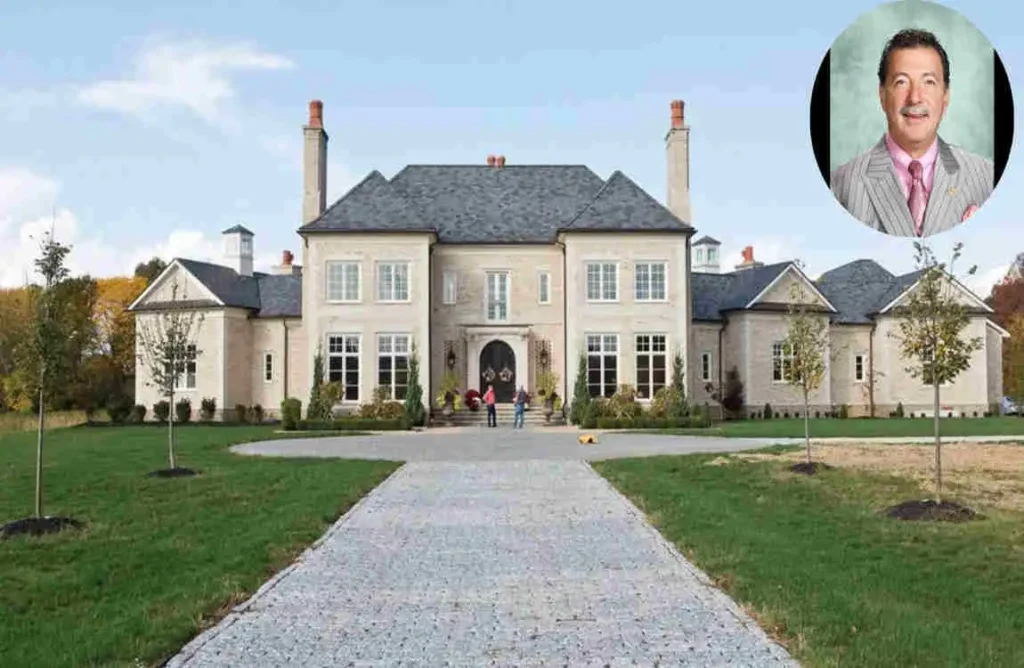The Adolph Lombardi House stands as a testament to timeless architectural elegance and historical significance. Nestled in a picturesque setting, this house is more than just a structure; it is a masterpiece that reflects the artistry and craftsmanship of its era. For architecture enthusiasts and history buffs alike, the Adolph Lombardi House offers a glimpse into a bygone era where design and functionality merged seamlessly.
This house is not just a relic of the past but a symbol of cultural heritage. Its intricate design, use of premium materials, and attention to detail make it a standout example of architectural brilliance. From its exterior façade to its meticulously crafted interiors, every corner of the Adolph Lombardi House tells a story.
Historical Background of the Adolph Lombardi House

Origins and Construction Timeline
The Adolph Lombardi House was constructed during a period when architecture was transitioning from traditional to modern styles. Built in the late 19th or early 20th century (specific dates may vary), the house reflects the architectural trends of its time. Its construction was a labor of love, with skilled artisans and architects working tirelessly to bring Adolph Lombardi’s vision to life.
Who Was Adolph Lombardi?
Adolph Lombardi, the man behind this architectural marvel, was a prominent figure of his time. Known for his refined taste and appreciation for art and design, Lombardi played a significant role in shaping the house’s aesthetic. His vision was to create a home that not only served as a residence but also as a statement of elegance and sophistication.
You may also read (exploringthe legacy of bo jackson through his house).
Historical and Cultural Context
The era in which the Adolph Lombardi House was built was marked by rapid industrialization and cultural shifts. This was a time when wealthy individuals sought to showcase their status through grand homes that combined traditional craftsmanship with modern conveniences. The house reflects this cultural zeitgeist, blending old-world charm with innovative design elements.
Architectural Trends of the Era
During this period, architectural styles such as Georgian, Neoclassical, and Victorian were highly popular. The Adolph Lombardi House incorporates elements from these styles, making it a unique representation of its time. Its symmetrical design, use of premium materials, and attention to detail are hallmarks of the architectural trends of the era.
Architectural Style and Influences
A Blend of Traditional and Contemporary Elements
The Adolph Lombardi House is a harmonious blend of traditional and contemporary architectural styles. While it draws heavily from classical influences, it also incorporates modern elements that were innovative for its time. This fusion of styles gives the house a timeless appeal.
Influences from Georgian Architecture
One of the most striking features of the house is its Georgian architectural influence. This is evident in its symmetrical layout, use of limestone, and incorporation of Ionic columns. Georgian architecture is known for its elegance and proportion, and the Adolph Lombardi House embodies these qualities perfectly.
Unique Architectural Features
The house boasts several unique features that set it apart from other homes of its era. These include:
- Semi-Hexagonal Porte-Cochere: This distinctive feature adds a touch of grandeur to the house’s entrance.
- Guastavino Arched Ceilings: Renowned for their exceptional strength and beauty, these ceilings are a testament to the remarkable craftsmanship of the time.
Comparison with Other Notable Works
When compared to other architectural works of its period, the Adolph Lombardi House stands out for its attention to detail and innovative design. While many homes of the era focused solely on grandeur, this house strikes a balance between elegance and functionality.
You may also read (explore the luxury of dan orlovskys home).
Exterior Design and Materials
The Façade: A Testament to Durability and Beauty
The exterior of the Adolph Lombardi House is a visual treat. Constructed using Indiana limestone, brick, and light red slate roofing, the façade exudes a sense of permanence and elegance. These materials were chosen not only for their aesthetic appeal but also for their durability.
Symmetry and Porch Placement
The house’s symmetrical design is a hallmark of Georgian architecture. The placement of the porch and veranda adds to its balanced appearance, creating a welcoming and harmonious look.
Veranda and Balustrades
The veranda surrounding the house is adorned with intricate balustrades, adding a touch of sophistication. This feature not only enhances the house’s aesthetic appeal but also provides a functional outdoor space.
Impact of Material Choices
The choice of materials plays a crucial role in the house’s overall aesthetic. The combination of limestone, brick, and slate creates a visually striking contrast while ensuring the house’s longevity.
Interior Architectural Features
A Walkthrough of the Interior
Stepping inside the Adolph Lombardi House is like stepping back in time. The interior is a showcase of luxury and craftsmanship, with each room designed to impress.
Key Rooms and Their Features
- Vestibule: Featuring Vermont and Pavonazza marble, the vestibule sets the tone for the rest of the house.
- Staircase Hall: The elliptical dome light in the staircase hall is a stunning focal point.
- Living Room and Dining Room: These rooms are adorned with intricate wood paneling and luxurious furnishings.
- Library and Salon: Designed for relaxation and entertainment, these spaces reflect the lifestyle of the original owner.
- Billiard Room and Den: These rooms showcase the house’s blend of functionality and elegance.
Use of Premium Materials
The interior features materials such as mahogany, teak, and marble, each chosen for its beauty and durability. These materials not only enhance the house’s aesthetic appeal but also reflect the wealth and status of its original owner.
Unique Interior Features
From vaulted ceilings to an electrical plate-warmer in the pantry, the house is filled with innovative features that were ahead of their time.
The House’s Cultural and Architectural Significance

An Architectural Gem
The Adolph Lombardi House is more than just a home; it is a piece of art. Its design and craftsmanship make it a standout example of architectural excellence.
Influence on Local Architecture
The house has had a lasting impact on local architecture, inspiring other homes in the area to incorporate similar design elements.
A Case Study in Craftsmanship
For architects and designers, the Adolph Lombardi House serves as a case study in how to blend tradition with innovation.
Modern Relevance and Preservation
Current Status
Today, the Adolph Lombardi House continues to captivate visitors. Whether it serves as a private residence, museum, or event space, it remains a cherished landmark.
Preservation Efforts
Efforts to preserve the house ensure that its architectural beauty is maintained for future generations. Restoration projects focus on keeping their original charm while incorporating modern conveniences.
Inspiration for Contemporary Design
The house’s timeless design continues to inspire contemporary architects, demonstrating that good design is timeless.
You may also read (explore the glamorous lifestyle of brody jenners house).

